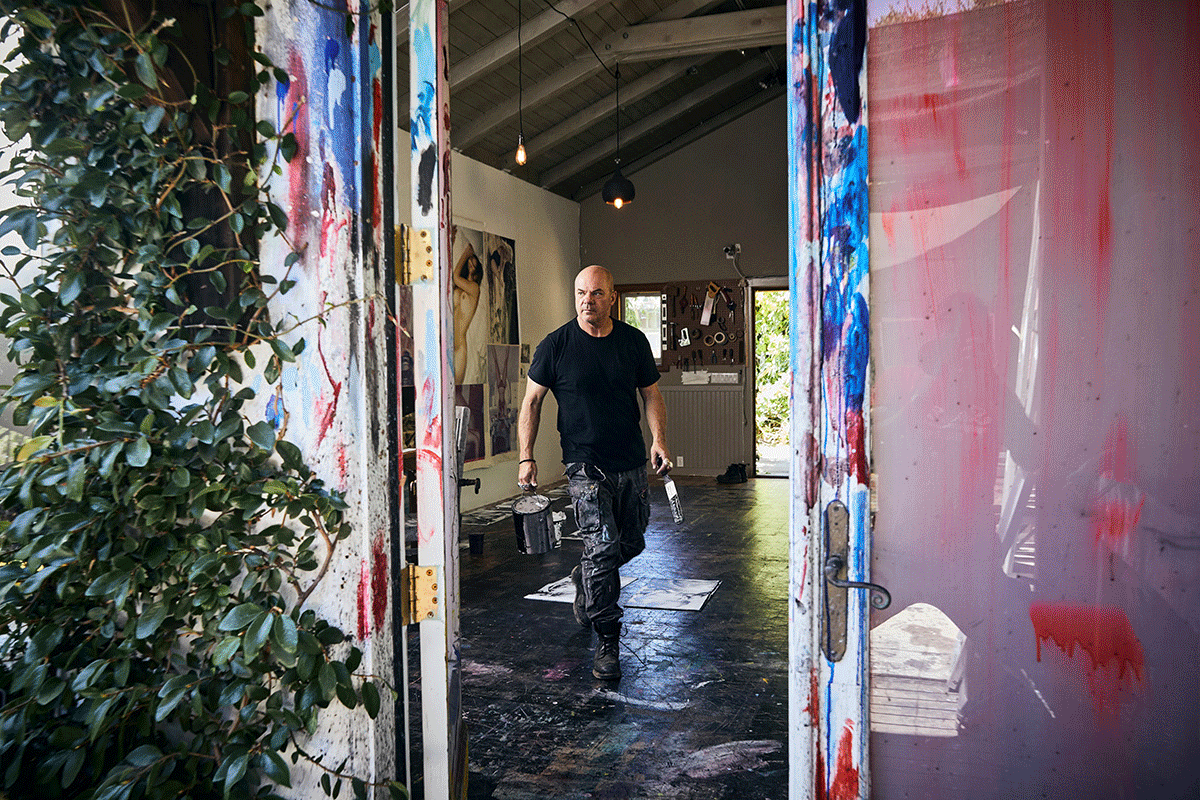
“The spectacular color in my paintings is the result of the absence of light I experienced as a teenager growing up in 1970s Northern England. It was grey, cold, brutal, colorless, and emotionally barren. I desired to escape and move to California, Hollywood, the West, the Pacific, the Mojave Desert—places where light, color, and heat exist in abundance. These fantasies—and how they are more real than reality—are what continuously draw me towards icons like Marilyn Monroe or the vistas of the American West.”
- Russell Young in Le Mile Magazine
Russell Young was born in 1959 in Yorkshire, where he was immediately put into a foster home, then a nunnery, and was adopted before reaching the age of one. No one knew who exactly his birth parents were, though there were rumors his mother was fourteen, and his father was from Italy. In Northern England, he spent much of his time moving from town to town and living an isolating existence. The lack of a personal or even a shared history has left him free to explore dreams and fantasies of sometimes better, sometimes harsher worlds.
With few prospects other than working in the factory towns, Young lied about his age to attend art college at the age of fifteen. He moved to the capital five years later and caught the attention of photographer Christos Raftopoulos, whom he assisted for several years. Raftopoulos introduced Young to another side of himself, building him his own darkroom, taking him to the opera, showing him the limits of his life did not need to confine him or his work. It was during this time—still rough in nature and occasionally homeless—he photographed the early gigs of Bauhaus, R.E.M., and The Smiths. His innate eye for movement landed him photoshoots for magazines and eventually his first record sleeve cover for the 1987 album Faith by George Michael.
Young continued to photograph celebrities and shoot over 100 music videos for leading artists during MTV’s height in the 1990s, which eventually brought him to the United States and California. The rock star aesthetic he had brandished in his photography lent itself to his earliest screen prints that followed in the 2000s. His first series, Pig Portraits, shown in Los Angeles in 2003, collected the infamous mugshots (real and staged) of celebrities awash in fame and monochrome but also restrained as a result of their actions. In his following series, Dirty Pretty Things, he began to incorporate his popular use of diamond dust. The glam shots of cultural icons, glittering in pulverized diamonds, embodied the lusts and aspirations of their eras.
Young is best known for his large scale silk screen paintings examining the cultural phenomena of fame and the promise (and souring) of the American Dream. Young’s practice often finds the artist going to extreme lengths to source exactly the right image and imbue each with a sense of the visceral and physical.
His hand-pulled silk screen paintings are made with one-of-a-kind, hand-crafted pigments and unique colorways as well as a layer of the artist’s signature use of diamond dust, which gives the work tactile, sculptural qualities.
The many series that have followed, including Fame, Heroes + Heroines and WEST, demonstrate his visceral, analog processes and signature use of diamond dust. He has exhibited across the world in numerous galleries alongside masterclass artists, institutions, and cultural figures. These include museum exhibitions at the Modern Art Museum Shanghai, Multimedia Art Museum Moscow, Cornell Art Museum, Polk Museum of Art, and the Goss-Michael Foundation.
Young’s work is included in many prominent private and institutional collections including those of Mark Zuckerberg, Barack Obama, David Bowie, Drake, David Hockney, Kayne West, Brad Pitt, and others, as well as The Getty Collection in Los Angeles and The White House Collection in Washington, D.C.

